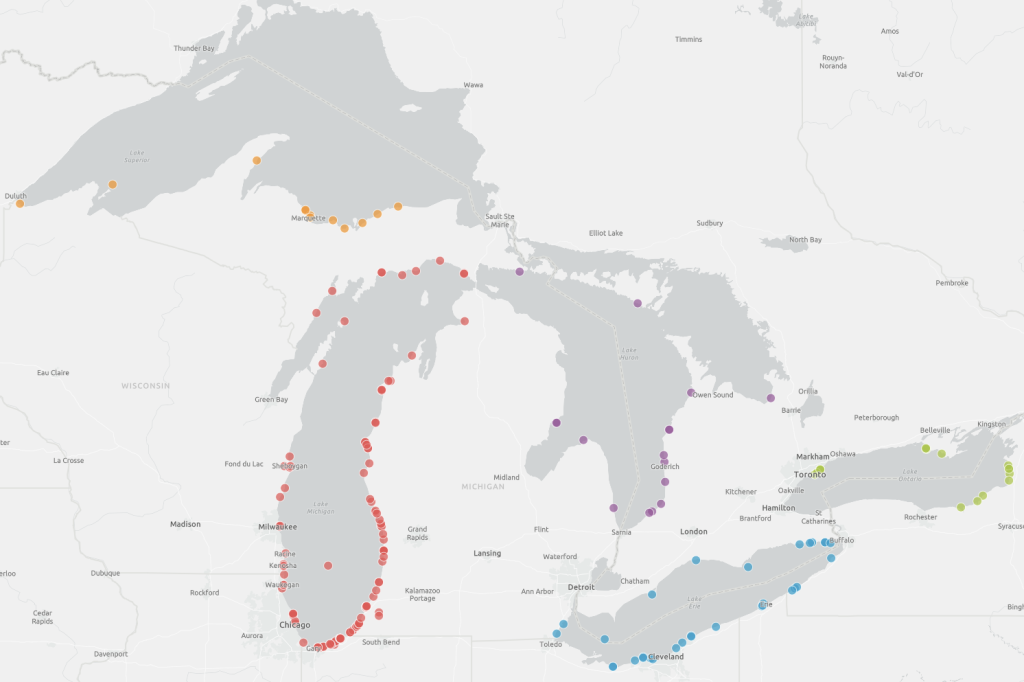The personal injury attorneys at Smith LaCien, LLP have compiled data from the Michigan Sea Grant about the Most Dangerous Beaches at the Great Lakes. The study period was from 2002 to 2020, which analyzed each of the five Great Lakes and their respective beaches. The study took note of the location, amount of rescues or fatalities, types of currents, and more. For more on this, Smith LaCien, LLPs post contains a more in-depth analysis of this study.
Lake Michigan
Lake Michigan is the deadliest lake of the 5 Great Lakes. With large cities like Chicago and Milwaukee, and bordering 4 states, Lake Michigan is both the most populated and most visited lake of the Great Lakes.
From 2002 to 2020, there were:
- 360 Rescues
- 125 Deaths
While the report does not mention per capita rates due to the difficulty in aggregating these numbers, Lake Michigan has many rescues and deaths each year from swimming and boating-related incidents.
Lake Superior
Lake Superior is the largest by surface area of the Great Lakes. Its vast shores occupy Wisconsin’s northern coast, the Upper Peninsula of Michigan, and over half of Ontario’s shoreline. However, Lake Superior has a much smaller population density and is surrounded by smaller cities, making it a less popular vacation destination and fewer incidents.
During the study period, there were:
- 40 Rescues
- 18 Deaths
Lake Erie
Lake Erie also borders some of the largest cities in America’s North East, with Buffalo, Detroit, and Cleveland all along its shores. It is no surprise, that there are more incidents here as well.
There were:
- 41 Rescues
- 41 Deaths
The high proportion of deaths means Lake Erie is a dangerous lake when navigated or enjoyed unsafely. Make sure to watch out for rip currents and other structural hazards along the shores. Also, make sure to wear life vests when in deeper water or if you are not an adept swimmer.
Lake Huron
Lake Huron is the second largest of the Great Lakes, but its sparse population density and far proximity from major cities mean it is a remote escape for many. But with that remoteness comes a certain degree of danger that you can face at Lake Huron. Let’s take a look at the statistics.
- 14 Rescues
- 20 Deaths
This lake also has a high proportion of deaths meaning that you should take extra precautions when enjoying the pristine waters of Lake Huron.
Lake Ontario
Lake Ontario is the smallest of the Great Lakes but borders Canada’s largest city, Toronto, meaning that it gets plenty of visitors each year.
- 25 Rescues
- 19 Deaths
What Makes the Great Lakes So Dangerous?
Lake Michigan, with a significant lead, stands as the most treacherous lake among the five Great Lakes. Over the study period, it accounted for nearly 70% of the total incidents in the region. In a distant second place, Lake Erie was responsible for approximately 12% of the recorded incidents. With these statistics, it becomes imperative for individuals to familiarize themselves with the risks associated with rip currents at Lake Michigan, and all the Great Lakes, in order to avert potential tragedies.
Understanding local weather patterns and water temperatures, which can have significant variations throughout the year, is crucial. While the lakes’ surface temperatures can reach a comfortable range of 70-80°F (21-27°C) during the summer months, deeper waters can experience rapid and drastic drops. It is key for individuals, even strong swimmers, to wear a well-fitted life jacket as a safety precaution. Not only does it provide buoyancy, but it also offers thermal protection in emergency situations which is critical to staying safe especially when boating.
Different currents, such as rip currents, longshore currents, and structural currents, can manifest swiftly and unexpectedly, posing substantial risks to swimmers and kayakers. Knowing how to react when caught in a current can truly be a lifesaver. For example, when caught in a rip current, remaining calm, conserving energy, and swimming parallel to the shoreline until away from the current are critical actions to take.





No Comment